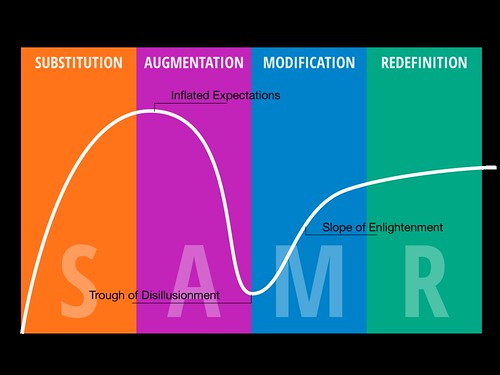 In May, I celebrated seven years of blogging. Blogging is probably the most serious writing
In May, I celebrated seven years of blogging. Blogging is probably the most serious writingcommitment I have ever had. This is a great opportunity for me to reflect on why I still blog.
Many better than me have explained the virtues of blogging, so here I want to talk about what I get out of blogging.
1. Blogging is putting my thinking into words. In a regular week, many thoughts zoom about in my head and between me and other educators. Blogging forces me to choose one idea and focus on it long enough to write about it. Long ago, Jean Detlefsen taught me that art is about making choices. Blogging is too. It forces me to commit to an idea at least long enough to compose about it.
 |
| Page views of guytrainin.blogspot.com |
3. Blogging is sowing seeds for later writing. In some ways, I write for a living. Blogging creates seeds that allow me to play with ideas and language that makes more formal writing be much easier.
4. Blogging allows me to forget. Blogging about a topic allows me to "unload" the idea onto the web. Sometimes the value is in doing just that- unloading the idea so it stops interrupting everything else. In that way, I use it like David Allen does in Getting Things Done. It's just that for me its not about tasks and things to do it is about ideas.
5. Blogging allows me to be reflective about teaching and the changes I make as I teach. My teaching has transformed in recent years and blogging had much to do with helping it along.
Should everyone blog? Why I believe that the answer is yes.

.jpg)


















